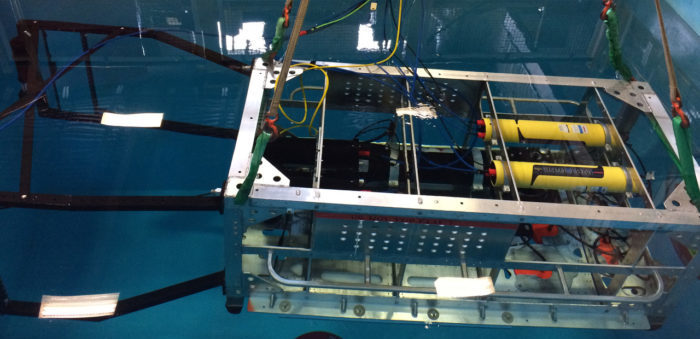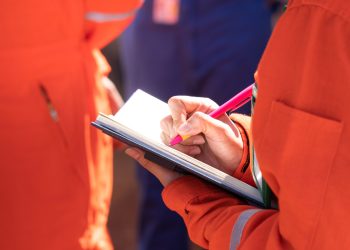A fisheries biologist and acoustics researcher at the Northeast Fisheries Science Center (NEFSC) laboratory in Woods Hole, Mass., Mike Jech is collaborating with the Woods Hole Oceanographic Institution (WHOI) on a new instrument platform called Deep-See. This instrument will send high resolution real-time images and data.
On August 11, the NOAA Ship Henry B. Bigelow left Newport, RI, for 10 days with 16 scientists to take the new instrument to sea for the first time for testing, calibration and evaluation.
[smlsubform prepend=”GET THE SAFETY4SEA IN YOUR INBOX!” showname=false emailtxt=”” emailholder=”Enter your email address” showsubmit=true submittxt=”Submit” jsthanks=false thankyou=”Thank you for subscribing to our mailing list”]
Deep-See is an acoustic, optic, oceanographic, and biological sampling system that has wideband echosounders, stereo and holographic cameras, environmental and light sensors, and eDNA instruments towed at the depths of the meso and bathypelagic communities to get an in-depth view of the organisms living there.
The towed platform carries many instruments and sensors adapted for use on this platform. It will collect data and send real-time information back to the surface for researchers to see and monitor.
According to Mr. Jech, the goal is to explore an area of the open ocean just off the edge of the continental shelf known as the Twilight Zone, where light from the surface stops penetrating, from about 200 to 1,000 meters depth.
This first cruise will allow the scientists to test the platform and see how all the sensors and instruments work together and how they adapt to pressure under water.
What is more, a 0.681 inch fiber optic cable with three copper conductors and three optical fibers will provide enough power and bandwidth to communicate with all the sensors and instruments on the platform. Nathan Keith, the NEFSC’s vessel coordinator, helped Jech locate the cable at the Southwest Fisheries Science Center in La Jolla, California.
The Bigelow is the first NOAA Fisheries research vessel to have this ability. The addition of fiber optic technology, as well as the vessel’s other scientific and gear handling capabilities, will expands the utility of the Henry B. Bigelow for scientific monitoring and research.






























































